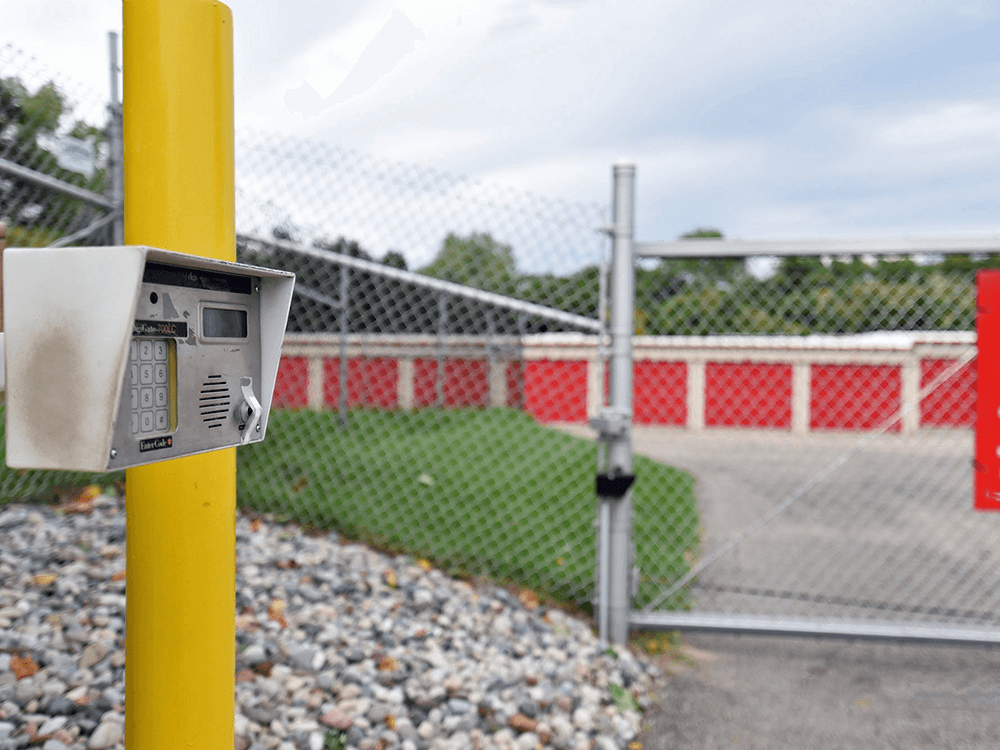
 Storage Tips
Storage TipsSmart Tech to Protect Your Storage Unit
Smart Tech to Protect Your Storage Unit
The storage industry has come a long way from steel roll-up doors and keyed padlocks. Today, a new wave of connected devices, cloud dashboards, and AI-powered analytics is redefining what “peace of mind” looks like for tenants and facility owners alike. Below is a practical guide to the technologies that are making storage units smarter—and a checklist for using them to keep your belongings (and your bottom line) safe.
Why “Smart” Security Matters
Traditional CCTV and cylinder locks create an illusion of safety, but they leave gaps:
- Delayed response: Footage is often reviewed after an incident.
- Single-point failure: Lose a key or code and security is instantly compromised.
- Limited insight: Conventional alarms don’t tell you who entered, when, or how long they stayed.
Smart systems close those gaps by layering sensors, real-time alerts, and data-driven automation. The result: faster incident response, airtight audit trails, and measurable ROI through insurance savings and customer trust. Market analysts expect facilities that adopt these tools to achieve vacancy-rate reductions of 8-12 percent compared with “analog” competitors
Core Tech for Individual Units
1. App-Controlled Smart Locks
Bluetooth- and Wi-Fi-enabled padlocks let tenants unlock with a phone, fingerprint, or single-use digital key—no more lost keys or cut hasps. Leading models such as Schlage Encode Plus and Kwikset Halo Select also log every entry, creating a tamper-proof timeline for each unit. ([The Verge][2])
Benefits
- Remote lock/unlock and auto-relock timers
- Temporary “guest codes” for movers or contractors
- Battery-low alerts before the lock dies
2. Door & Motion Sensors
Magnetic contacts on the roll-up door tell you the second it’s breached, while passive infrared (PIR) sensors detect movement inside the space—useful when thieves cut through an adjacent wall. Many units now ship with integrated sirens that trigger both an onsite strobe and push notification to staff.
3. Environmental IoT Sensors
Temperature, humidity, and leak probes protect furniture, electronics, and antiques from “silent” damage. A basic sensor kit costs $50–$200 per unit and can pay for itself in one averted mold claim. Pro tip: Calibrate sensors quarterly—drift of even ±2 % RH can mask moisture spikes during humid months.
Implementation Checklist
-
Audit Your Risks Map blind spots, moisture-prone rows, and high-traffic gates before buying hardware.
-
Choose an Ecosystem, Not Just a Gadget Smart locks, cameras, and sensors should live on one dashboard to avoid “tabs chaos.” Look for open APIs or systems built on Z-Wave/Matter standards.
-
Verify Connectivity Concrete walls can strangle Wi-Fi. Use mesh repeaters or LTE backups for units at the far end of the property.
-
Plan Power & Battery Cycles
- Hardwire cameras where possible.
- Schedule battery swaps for locks/sensors at the same time you test fire extinguishers.
-
Layer Your Defenses Combine deterrence (bright lighting, signage) with detection (sensors) and response (24/7 monitoring service).
-
Document and Train Create SOPs: who gets text alerts at 2 a.m., how footage is archived, and what to tell tenants about data privacy.
Future-Proof Trends to Watch
- Biometric & Face-Unlock Doors – Deployed in pilot programs, these doors read faces and palms, eliminating PINs entirely. ([Tenant Inc.][11])
- Drone-Assisted Patrols – Autonomous drones triggered by ground sensors can cover large RV lots faster than guards.
- Blockchain Audit Trails – Tamper-resistant ledgers that prove who accessed a unit and when, useful for liability disputes.
- Edge-AI Cameras – Devices that process footage on-device, reducing bandwidth and alert latency.
- Green Tech Integration – Solar-powered sensor hubs and smart lighting that dims when no motion is detected.
Smart Security at Storage Rentals of America
At SROA, we’ve already integrated mobile gate entry, unit-specific smart locks, and 24/7 AI-backed camera analytics at many locations. Environmental sensors in our climate-controlled buildings alert managers the moment humidity drifts outside safe ranges—helping protect everything from leather sofas to rare vinyl records. When combined with our no-hidden-fee pricing and online lease signing, smart security becomes one more way we make storage effortless.
Frequently Asked Questions
Q: Can I install my own smart lock on an SROA unit? A: Yes—so long as it meets our shackle-size guidelines. Many tenants pair a Bluetooth padlock with our existing cylinder lock for double protection.
Q: Will sensors void my insurance or warranty on stored items? A: Most insurers view proactive monitoring favorably; some even reduce premiums when leak or humidity sensors are in place.
Q: How is my data protected? A: Access logs are encrypted end-to-end. Video retention follows state privacy laws and is purged automatically after the statutory window.
Q: What happens if the power goes out? A: Cameras switch to battery backup, and gate systems fall back to coded keypad entry. Locks remain functional because they’re battery-powered.
Ready to Level Up Your Unit’s Security?
Smart technology isn’t a luxury add-on—it’s quickly becoming the industry standard for protecting both property and peace of mind. Whether you’re a facility owner weighing capital upgrades or a tenant looking for safer long-term storage, the tools outlined here offer scalable, data-rich protection that old-school locks simply can’t match.
Next Step: Schedule a visit or start your online lease with Storage Rentals of America today, and see firsthand how our security systems keeps your storage experience stress-free.



